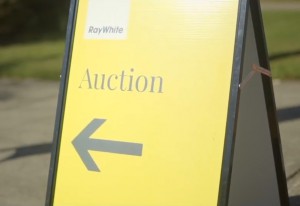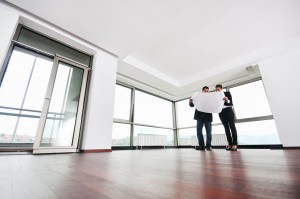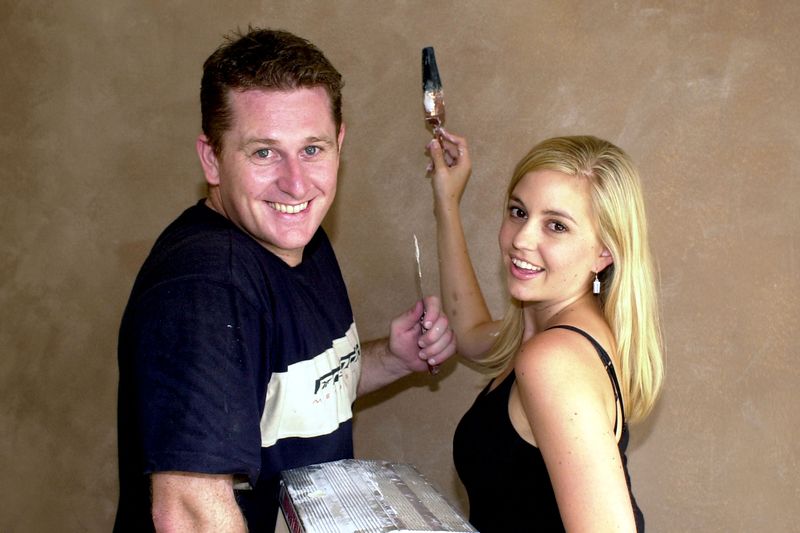There are more interesting articles, commentaries and analyst reports on the Web every week than anyone could read in a month.
Each Saturday morning I like to share some of the ones I’ve read during the week.
The weekend will be over before you know it, so enjoy some weekend reading.
Auction clearance rates in Sydney and Melbourne rising but not because listing numbers are low: analysis
The last coupe of weeks have seen high results in the auction market – but is there more to it?
An article on Domain.com.au analyses at the real reason potentially causing the rise.
Relatively high clearance rates in the past two months can be taken at face value and are not the result of particularly low real estate stock levels, an economist says.
In July the rate was 69 per cent in Sydney and 67 per cent in Melbourne, and the rate each week since then has been higher.
Research by Domain economist Trent Wiltshire indicated this was most likely an early sign of a market turnaround and rising prices, and higher clearance rates were not caused by low auction numbers.
“There’s been commentary suggesting that clearance rates have been boosted by the low number of auctions,” he said.
“Historically, that hasn’t been the case.”
Mr Wiltshire’s research looked at monthly clearance rates since 2005 and found the opposite to be true; months with more auctions had higher clearance rates.
While there were some months or weeks that had low numbers of auctions and high clearance rates, the research showed this was not typical.
“Regardless of the number of auctions being held, clearance rates are still a timely and pretty accurate indicator of market conditions,” he said.
This rule might not apply in certain areas of the wider cities, as the property market greatly varies by suburb, he said.
“This analysis looks at Sydney and Melbourne as a whole, so there may be suburbs or pockets where low auction numbers have contributed to higher clearance rates and prices.”
On the ground, auctioneers are upbeat about spring.
Buyer confidence in Melbourne has picked up in the past few weeks, with a rise in the amount of active bidders per auction, Ray White chief auctioneer for Victoria and Tasmania Matthew Condon told Domain.
Instead of holding back and waiting to see what unfolded, buyers are now placing higher starting bids, responding quickly to their opposition instead of waiting for the third and final call, and jumping in with a second wave of bidding after a home is announced on the market, he said.
“I do expect it to continue,” Mr Condon said.
“If we continue to get such a high level of active bidders, even if we have more properties come to market I think there’s enough interest and confidence in the market to sustain.”
Buyer activity in Sydney has also been picking up, Cooley Auctions managing director Damien Cooley said.
“It’s not just off the back of low volumes of property on the market – that is a contributing factor but it’s not the only factor,” he said.
“I think the Liberal government getting re-elected has played a significant role in people’s ability to have confidence in the asset values.”
He also highlighted interest rate cuts and a move from the bank regulator to let buyers borrow more.
Read the full article here
Bank funding eases
It seems that bank funding has eased.
This Blog by Pete Wargen explains what’s going on.
Funding costs fall
There was a lot of hype about rising interest rates and funding costs last year, but that’s all dissipated.
Both 3-month and term are where Aussie banks hedge, fund, and borrow, and deposit flows have been solid.
3-month bills are now tracking at under 1 per cent.
As appetite for mortgage lending picks up I expect we’ll see more stories about mortgages being available from 3 per cent or even lower.
Read the full article here
Building expert commissioned to investigate industry warns ‘I wouldn’t buy a new apartment’
Warning signs about ‘off the plan’ properties have been around for some time – and now things are getting even more real.
This article from ABC News looks into the details of the recent investigation into the building industry.
The co-author of a landmark report on how to fix Australia’s building industry has declared she would not buy a newly built apartment, given the scale of the problems.
“If I was going to be investing in an apartment, I’d buy an older one.
It’s common sense, isn’t it? It’s just logical,” Bronwyn Weir told a Four Corners investigation into Australia’s building industry.
“I wouldn’t buy a newly built apartment. No.”
Ms Weir and former senior public servant Peter Shergold co-wrote the Building Confidence report commissioned by Australia’s federal, state and territory building ministers.
The report, delivered in February last year, made 24 recommendations including a crackdown on private certification of buildings and registration of every person involved in the building process.
At a meeting in July, building ministers committed to implementing the reforms, but Ms Weir told Four Corners that would not fix the legacy of decades of inaction.
“Probably the prevalence of noncompliance has been particularly bad, I would say in the last say 15 to 20 years. It’s gotten worse over that period. And that means there’s a lot of existing building stock that has defects in it.
“[The new reforms] won’t improve existing building stock unfortunately. So there’ll be legacy issues for some time and I suspect there’ll be legacy issues that we’re not even fully aware of yet.”
Beware of buying off the plan, Ms Weir warns
Ms Weir said for those looking to buy an apartment, it was more prudent to opt for a building “that maybe is, say, five years plus [of age]”.
“You would like to think that if there are major issues with that building, they’ll have started to show,” she said.
“So I think if people are looking at investing, there are ways to do good due diligence. Buying off the plan is a really tricky proposition at the moment.”
Ms Weir said high-profile cases such as the evacuation of Opal Tower and Mascot towers in Sydney meant “there is a lack of confidence” in the building industry.
But she hoped some better builders would give people assurances it was safe to buy “and try to salvage what has been a pretty damaging impact of these latest news stories”.
A recent study of apartment building defects in Australia by Deakin University and Griffith University found 97 per cent of buildings examined in NSW had at least one defect in multiple areas. In Victoria the figure was 74 per cent and in Queensland it was 71 per cent.
One of the study’s authors, Deakin University’s Nicole Johnston, told Four Corners previous calls for reform had gone largely unheeded.
“People have been jumping up and down about this for years and years and years,” Dr Johnston said.
“There’s been lots of committees formed, there’s been lots of task forces, there’s been lots of consideration around these, but really nothing has happened”.
NSW missed opportunity to bring in stricter laws
One glaring example of inaction is how NSW failed to implement laws that could have addressed a major underlying reason for defective building work: dangerous or inferior products.
n 2017, Queensland introduced new laws to police dangerous building products — also called non-conforming products — including flammable cladding that was responsible for the fire spreading in the UK’s Grenfell Tower, in an incident which killed 72 people.
The laws — known as chain of responsibility laws — ensure every person who uses or supplies a product on a building can be held personally responsible if it fails.
Later that year, NSW showed a draft bill of its own proposed law to a meeting of building industry groups.
“What we saw was a draft bill that was the Queensland legislation but on steroids — it was better,” Rodger Hills, the executive officer at the Building Products Industry Council, said.
“They had taken a lot of time to incorporate all the learnings and findings from the Queensland experience and wrapped it up into a piece of legislation that was robust, it was easy to use, and it would have done its job.
“The industry representative left that meeting very hopeful that this was something that was going to be useful and it actually worked properly.”
When the bill entered the NSW Parliament, Mr Hills said the industry was shocked to see it had been “absolutely gutted.”
“We counted up about 80 clauses that had been pulled out of the documentation,” he said.
“Those clauses were all around non-conforming building products. In fact, the definition of a non-conforming building product wasn’t even in the bill.
“All of the clauses to do with chain of responsibility and duty of care, they were all taken out. As were all powers, the recall powers the minister had to recall defective products.”
Government did not want to add more red tape
Four Corners has confirmed the NSW Cabinet rejected the proposed chain of responsibility law due to concerns it would impose more red tape on the building industry, potentially slowing it down.
Read the full article here
Is property a more stable investment than shares?
In the battle between property and shares – what is the best investment?
In this article for Switzer, John McGrath analyses the results.
Investors in the share market have had a rough time of late, with eye-catching headlines about tens of billions being wiped off the ASX in a matter of days last week.
The world is jittery about a possible global recession caused by the China-US trade war, Brexit, unrest in Hong Kong, slowing growth in China and most recently, a contraction in the world’s fifth largest economy and Europe’s biggest, Germany.
Over the first two weeks of August, the S&P ASX All Ordinaries took a -5.9% fall, whereas it took six months for property prices to decline the same amount in Sydney before the market turned in June.
In those same two weeks, the All Ords finally went beyond their last peak, which was back in 2007.
That means it took 12 years to fully recover from the GFC, whereas the Sydney and Melbourne property markets have taken about two years to right themselves in the most recent downturn.
This is a timely reminder that property is a safer, more reliable and most importantly, stable asset class for everyday investors.
Unless you’re a professional or a very experienced and resilient investor, it’s hard not to get nervous and panic sell when your shares take a sudden dive.
Don’t get me wrong, Australian shares have an impressive track record for great long term returns but the market can get very volatile, very quickly.
With share market investment, you need to have the psychological strength to weather the sudden and usually sharp dips and remain focused on the long term.
Shares are also highly influenced by global events.
Market conditions can change overnight, whereas property is a much slower burning asset class and primarily influenced by our domestic economy.
It is so easy to panic when stocks begin to slide; and unlike property, it takes one call to your broker or a two minute online transaction to dump your investments out of pure fear.
This is one of the many reasons why I think property is such a good option for ordinary investors.
We all need to invest for financial security.
Unless you’re on a very high income, it’s not really possible to retire on savings alone.
You need quality assets.
Any professional investor will tell you that diversity is really important, so having both shares and property is a great idea and there’s some good buying opportunities right now in both!
Focusing on property, it looks like people are starting to recognise this as we head towards the biggest selling season of the year.
The national ‘time to buy a dwelling’ index in the latest Westpac/Melbourne Institute survey of consumer sentiment jumped 3% this month to its highest level since early 2014.
I believe there is great opportunity for investors across Australia this Spring.
- In Sydney and Melbourne, prices aren’t likely to go any lower in the best areas. Lack of stock is pushing prices up in some suburbs, so don’t get carried away at auction and pay too much. This very tight supply/demand dynamic could change soon
- To maximise capital growth, look into some of the new infrastructure projects and identify areas that are beneficiaries of road and rail enhancements. Some areas have or will soon become 20-30 minutes closer to the CBD so that will spike values in the next sales cycle
- Yields are a bit low in our two biggest cities, averaging 3.4% – 3.7%, but falling interest rates are offsetting this. Avoid oversupplied apartment markets where you’ll have difficulty securing a tenant right now
- Prices have come off the boil in every other capital plus plenty of regional areas due to lending restrictions. Things are easier now following APRA-led changes to assessment criteria, effective from July, which means you can borrow more and take advantage of softer prices now
- Rental yields are stronger in other capital cities and regional areas. Latest CoreLogic data shows the average gross yield is 4.6% in Brisbane and 4.8% in Canberra. Regional NSW and Victoria are averaging 4.7%, Regional Queensland is 5.5%, Regional South Australia is 5.7% and Regional Western Australia is 5.9%
Investor activity has fallen 40-50% on 2016/2017 peaks in NSW, Victoria, Queensland and ACT, according to ABS data, so if you’re ready to buy this Spring you won’t have much competition from fellow investors.
Read the full article here
The Block 2019: Will the winning home sell for $3.5m?
THE BLOCK has seen highs and lows over the years when it comes to auction day.
So will the 2019 St Kilda season hit it’s $3.5m mark?
This article from Realestate.com.au looks back at past results to see what we can expect.
When promos for The Block promise this will be the biggest year yet, it’s not just the size and scale of the properties that we expect will increase.
While over the years the show has reflected growth in Australia’s hottest property markets (in Melbourne and Sydney), buyers of these properties are paying well above the median price for a property from The Block.
Prices for these renovated homes have risen from $751,000 for the winning Bondi apartment in the first season back in 2003 to $3.02 million for last year’s winning apartment in St Kilda.
So, just how much over the median are these homes selling for? And are these properties actually a good investment?
Who buys a home on the The Block?
Since the show began, buyers have been paying between $222,000 and $2.49 million above the median price for the same property type in the same suburb for the homes renovated by the contestants.
Most of the buyers that the show’s advocate Frank Valentic has represented since 2011 have been investors who are attracted to the properties for both the rental returns and the tax offsets they can claim.
“Probably 25% are owner occupiers, but the majority are looking at it for investment because the returns are really good and the depreciation last year alone per annum was about $130,000 to $140,000 a year, which is unheard of for a property generally,” he says.
“Plus the rental returns are quite good, they are generally returning in the last series $2000 to $2500 a week in rent on top of that as well… that is high.
But they also come fully furnished and generally there’s $100,000 to $150,000 worth of free furnishings that go with it and that’s why they get such high returns.
And you can depreciate the furniture, which makes it very attractive for investors.”
The Block’s winning formula
So what makes these particular properties so attractive to buyers? realestate.com.au chief economist Nerida Conisbee says the show’s producers have picked premium suburbs that are attractive to a wide pool of buyers.
“The suburbs chosen are always high demand on realestate.com.au – they are expensive but have a lot about them that people like,” she says
“In many of the years, the homes have been sold in boom markets – price growth got quite extreme in some of these suburbs over this time.”
Valentic agrees that by selecting run-down homes to renovate in blue chip suburbs in the inner-city, The Block is offering buyers great homes in fantastic locations.
“So that’s a reason why it’s so attractive, it’s the locations they’re buying.
People are seeing good value for money in that they’re not going to spend $2-$3 million to buy a dud of a property just because it’s got some association with a TV show,” he says.
Homes get bigger and bigger
Part of what has driven the price growth with The Block properties is the size.
The Cameron Street houses in Richmond that featured in series four of the show in 2011 for example, were about 120sqm each, where as the 2019 properties are much bigger.
“They have got bigger almost every series and they’re now monsters – these triple level ones.
They’re over 300sqm plus they’ve got a lot of land with it, which is obviously going to add some dollars to what people will pay for them,” he says.
The Block 2019: What will the winning home sell for?
Valentic admits that with such enormous price growth over the years, the pool of potential buyers for The Block has shrunk and “it gets tougher” to find buyers.
“This year, given that The Gatwick sold for $2.6-$3 million, these are bigger and they’re terraces and they have land and double garages and some have views.
We’re already thinking this year they’ll be in the vicinity of early to mid $3 millions.
This is where I think they’re going to have to sit.”
Conisbee agrees and adds that the market is picking up in St Kilda, home to this year’s project in Grey Street.
“There are a few things in their favour – the market is recovering and St Kilda is a popular location.
Theproperty was purchased for $10.8 million – with five apartments being renovated, selling at between $3.5 to $4 million would be a great outcome,” she says,
But there’s only been one sale in the area in the past 12 months of a three-bedroom apartment, terrace or house in St Kilda that was over $3 million and that was the winning apartment in The Gatwick from last season.
“The median house price in St Kilda is now $1.6 million, so it’s going to be literally double what 80% of buyers pay in St Kilda.
Read the full article here
Weekend video: 3 tips to boost your confidence
from Property UpdateProperty Update https://propertyupdate.com.au/weekend-reads-must-read-articles-from-the-last-week-100/

















No comments:
Post a Comment